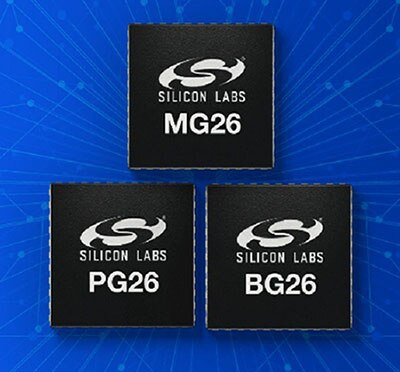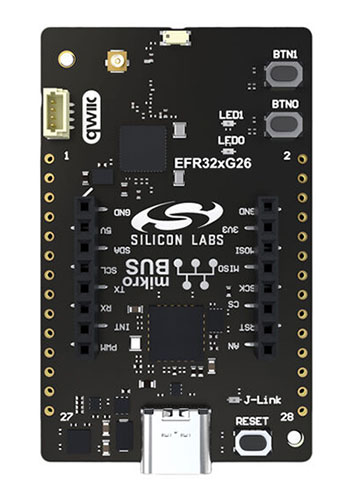透過 Matter 達到智慧家庭互連標準化
電子產業帶動創新智慧家庭產品的驚人風氣,但要讓消費者有能力達到開箱即用並且無縫協作,這方面的進展則相對緩慢。
眾多最知名的平台供應商、裝置製造商和半導體公司,正以 Matter 連接標準為基礎攜手合作,希望此標準最終能讓產品設計人員擺脫多年來的困擾,消除眾多產品之間的障礙。
Matter 的目標是讓不同的生態系統皆可控制裝置,藉此克服早期標準所引發的智慧家庭互連問題。Silicon Labs 正透過必要的核心矽解決方案、開發工具與服務,協助設計、構建、認證和部署符合 Matter 的產品,藉此協助推動此轉型。
智慧家庭的樣貌和更廣大的 IoT 環境是由眾多互連標準所刻畫,但每個標準都有自己的優缺點。像是 Zigbee 就需要專有的中樞或嵌入式控制器、Wi-Fi 的功耗要求對電池供電式裝置來說不切實際,而低功耗藍牙 (BLE) 則範圍與反應性不足以達到更廣大且永遠啟動的環境。Thread 是一種以 IP 為基礎的網狀通訊協定,針對低功耗和可靠性進行最佳化,適用於永遠啟動的小型裝置,但頻寬較小,而且需要應用層堆疊來達到跨廠商的互通性。
特定平台的生態系統 (如 Apple HomeKit、Google Home、Amazon Alexa 和 Samsung SmartThings) 營造出分散的開發人員環境。Matter 於 2022 年推出,是為了促進互通性與本機控制性,並可讓裝置同時連接到多個生態系統與平台並受其控制。
Matter 是一種應用層級的協定,可在 Wi-Fi、乙太網路和 Thread 上運作,並採用 BLE 進行裝置試運轉與設定。在連接標準聯盟 (CSA) 的支援下(此為 Zigbee 聯盟歷經品牌重新建立與版圖擴大的演變而成),Matter 裡含有 Google Weave、Apple HomeKit 和 Zigbee 的元素。
CSA 成員超過 700 多家,包括平台和裝置廠商 Apple、Google、Amazon 和 Samsung;也有 Home Depot、IKEA 等零售商;眾多裝置製造商;以及 Silicon Labs 等矽晶和軟體廠商。
CSA 為開發人員提供開箱即用的核心連接性、Matter 統一開源軟體開發套件、標準化裝置模型以及內建安全性,其中包括加密通訊和安全導入。如此便可開發出跨多重生態系統運作的單一產品版本,進而節省原型製作的相關時間和成本,同時開箱就可享有隨插即用的相容性。
透過 Matter,邊界路由器就可將低功耗 Thread 網狀網路連接到其他 IP 網路,例如 Wi-Fi 和乙太網路,無需像傳統 IoT 閘道器那樣在不相容的協定之間轉換訊息。
Silicon Labs 順勢拓展
Silicon Labs 屬於 CSA 的關鍵成員,也是其 GitHub 儲存庫的主要貢獻者之一。該公司帶來了矽晶開發的專業,以及可用於多種無線協定的開發工具,包括 Thread、Wi-Fi 和藍牙。
為了將這些功能導入到 Matter,Silicon Labs 推出 xG26 系列 (圖 1),是以共用平台為基礎的一系列無線系統單晶片 (SoC) 和微控制器 (MCU)。
 圖 1:xG26 產品系列包含三類裝置,皆以同時多重協定 MG26 為名稱開頭。(圖片來源:Silicon Labs)
圖 1:xG26 產品系列包含三類裝置,皆以同時多重協定 MG26 為名稱開頭。(圖片來源:Silicon Labs)
xG26 晶片以 ARM Cortex-M33 核心為基礎建構,可支援高達 3 MB 快閃記憶體和 512 kB RAM,其處理能力可因應複雜的應用,並整合了 AI/ML 硬體加速能力,可促成反應快且有效率的邊緣運算。
EFR32MG26 (MG26) SoC 可利用 Matter、OpenThread 和 Zigbee 協定達到網狀 IoT 無線連線。具有高達 2,300 KB 快閃記憶體和 512 KB RAM,是上一代裝置的兩倍。能為智慧家庭、照明和大樓自動化產品提供穩定的效能和硬體層級安全性,更可在 Google Home 或 Apple HomeKit 等生態系統上運作,也有能力可適應未來新興的使用案例。
xG26 系列還包括針對 BLE 和網狀網路最佳化的 EFR32BG26 (BG26) SoC,適用於智慧照明和可攜式醫療裝置等應用,以及一般用途的 EFM32PG26 (PG26) MCU 系列,專為需要穩健處理能力而無需無線連線的應用而設計。此外,還有幾款評估板,包括 XG26-EK2709A Explorer 套件 (圖 2);這是一個小尺寸的開發與評估平台,可針對 2.4 GHz 無線協定 (包括 BLE、藍牙網狀網路、Zigbee、Thread 和 Matter) 的 IoT 應用迅速進行原型開發。
 圖 2:XG26-EK2709A 具有 USB 介面、板載 SEGGER J-Link 除錯器、兩個使用者 LED、兩個按鈕,並可透過 mikroBus™ 插槽和 Qwiic® 連接器支援硬體附加板。(圖片來源:Silicon Labs)
圖 2:XG26-EK2709A 具有 USB 介面、板載 SEGGER J-Link 除錯器、兩個使用者 LED、兩個按鈕,並可透過 mikroBus™ 插槽和 Qwiic® 連接器支援硬體附加板。(圖片來源:Silicon Labs)
結論
Silicon Labs 的 xG26 系列可提供充裕的處理能力、記憶體並內建眾多功能,如機器學習加速和進階安全性等,因此能支援低功率、永遠啟動型裝置的眾多應用,滿足其對安全性、反應速度與新興標準相容性的需求。無論是要設計同時多重協定的裝置、純藍牙的產品,還是非無線的嵌入式系統,xG26 系列均符合其設計需求,能以共通的架構提供處理能力、記憶體配置、安全功能和開發工具。

Have questions or comments? Continue the conversation on TechForum, Digi-Key's online community and technical resource.
Visit TechForum








